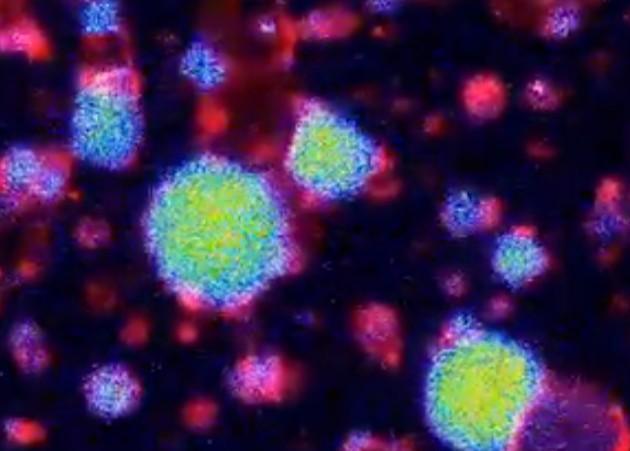
Artificial Cells that Pulse to a 24-hr Biological Clock Created
Scientists at the University of California, Merced (UC Merced) have made a groundbreaking discovery in the field of synthetic biology. They have created artificial cells that mimic nature’s internal clockwork, exhibiting a steady 24-hour rhythm that mirrors the circadian rhythms found in living organisms. This innovative breakthrough has significant implications for our understanding of biological clocks and their role in governing essential processes such as sleep, metabolism, and more.
The team of researchers, led by Dr. Frances Arnold, a Nobel laureate and professor of bioengineering, biochemistry, and chemistry at UC Merced, used a combination of synthetic biology and artificial cell design to create the artificial vesicles. These vesicles, also known as liposomes, are tiny, membrane-bound structures that can encapsulate molecules and biological processes.
The artificial cells were engineered to contain a circadian clock gene, a key component of biological clocks found in all living organisms. This gene, called the KaiC gene, is responsible for generating the rhythmic oscillations that govern the internal clock. The researchers inserted the KaiC gene into the artificial cells and observed their behavior over a 24-hour period.
To their surprise, the artificial cells began to pulse with a steady rhythm, mirroring the circadian rhythms found in nature. The pulses were consistent and predictable, with a clear 24-hour periodicity. This was a remarkable achievement, as it demonstrated that the artificial cells had successfully replicated the internal clockwork of living organisms.
The findings of this study have significant implications for our understanding of biological clocks. Biological clocks are essential for governing various physiological processes, such as sleep-wake cycles, metabolism, and hormone regulation. They play a critical role in maintaining homeostasis and ensuring the proper functioning of the body.
One of the most striking aspects of this study is the stability of the artificial cells’ internal clock. Despite being in a noisy and fluctuating environment, the artificial cells’ clock remained remarkably stable. This is a testament to the robustness of the circadian clock mechanism, which is able to maintain its rhythm even in the face of external perturbations.
The creation of artificial cells with a biological clock also opens up new avenues for research and potential applications. For example, synthetic biologists could use these artificial cells to study the mechanisms of biological clocks in greater detail, potentially leading to new insights into disease mechanisms and the development of novel therapies.
Furthermore, artificial cells with a biological clock could be used to develop novel sensors and diagnostic tools for monitoring physiological processes in real-time. For instance, artificial cells could be engineered to detect changes in glucose levels or other biomarkers, allowing for more accurate and timely diagnosis of diseases.
In conclusion, the creation of artificial cells that pulse to a 24-hr biological clock is a significant breakthrough in synthetic biology. The stability and predictability of the artificial cells’ internal clock demonstrate the robustness of the circadian clock mechanism and its ability to function even in artificial systems.
These findings have far-reaching implications for our understanding of biological clocks and their role in governing essential physiological processes. The potential applications of artificial cells with a biological clock are vast, and this research has the potential to revolutionize the fields of synthetic biology, biotechnology, and medicine.
Source:






